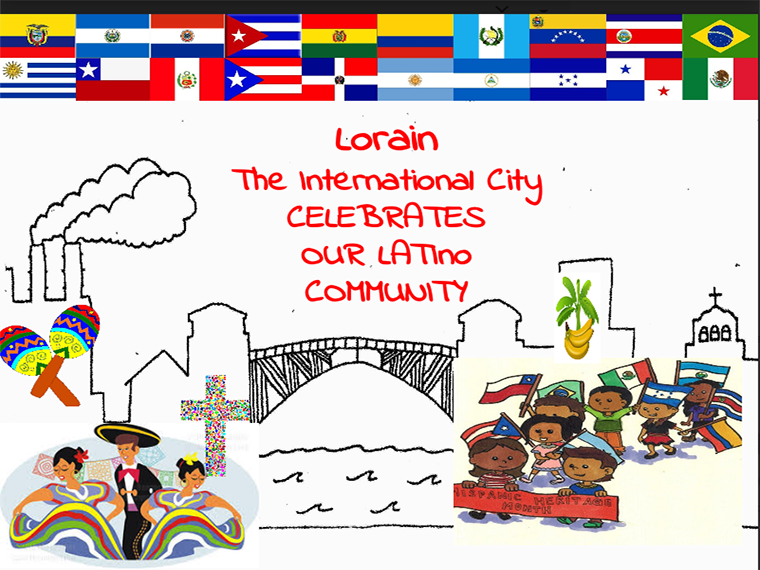Oberlin Faculty Contribute to Local Latino Oral History Project
October 9, 2020
Amanda Nagy

A view of Broadway Avenue in downtown Lorain, Ohio, circa 1964.
Photo credit: Courtesy of the Michael Schwartz Library at Cleveland State University
A collaboration between Oberlin faculty, the Lorain Historical Society, and El Centro de Servicios Sociales Inc. has produced the first-ever Hispanic Heritage Month toolkit for local K-12 educators.
Professor of Comparative American Studies Gina Pérez and Associate Professor of History and Comparative American Studies Pablo Mitchell have been in conversations with the historical society and El Centro for more than a year to document Latino heritage in the city of Lorain and Lorain County.
Hispanic Heritage Month is September 15 through October 15. In the toolkit for educators, the terms Latino/a and Hispanic are used interchangeably as a way to honor the national Hispanic Heritage Month program. The gender-neutral term Latinx is often used at Oberlin to include those who don’t identify with the gender binary.
The toolkit is a lesson plan that aligns with the state of Ohio’s standards for social studies curriculum. Jenn McGee-McManamon, the children’s education and curriculum coordinator for the Lorain Historical Society, created lessons that can be tailored to students and teachers of all grade levels. Because virtual learning is the norm for most students this year, she designed the lessons using Google Classroom.
Victor Leandry, executive director of El Centro, explains that the toolkit is one piece of a broader effort to create an archive of the more than 100-year history of Latinos living in Lorain County, beginning with the migration to the city of Lorain for job opportunities. Leandry is often asked to speak and give presentations on this rich history in schools, churches, and community organizations—but up until now, there was no official historical archive from which he could draw on.
McGee-McManamon says the toolkit contains a lot of value for teachers. “It’s based in history, but there are other subjects embedded in the lesson. The end piece is a mural of the cityscape of Lorain that the kids decorate.”
She says the toolkit received a “fantastic response” from schools and educators in Lorain County.

“As a historical society, we went to El Centro to ask for their information to have it represented in our museum, but we had literally two books in our archives,” says McGee-McManamon. “We had a lot of photographs, but not the core essence of the story of how people came here and how active the community is now.”
Pérez teaches a course with Comparative American studies instructor Adrian Bautista called Latinx Oral History. This semester, they’re collaborating with El Centro and the historical society to invite community members to learn from the class and become potential interviewees. She says Oberlin students are often surprised to learn that Lorain is about 30 percent Latino.
“As a college professor, it’s exciting and important work, particularly when students learn for the first time about communities they were unfamiliar with.”
Pérez likes to point out that in this moment of the pandemic, “where we’re all lamenting and mourning the things we lost, one of the things we’ve gained is the ability to connect with Zoom. It’s been great to invite people from Lorain to the class. I try to look for the bright spots, and Zoom has facilitated a quick engagement and turnaround.”
Leandry says he is happy with the outcome, and his hope is to continue to develop an oral history project in Lorain.
Likewise, the historical society intends to expand the education toolkit in other venues. McGee-McManamon says she’s working on a similar project for Black History Month.
You may also like…
Josh Nolan Named Vice President, General Counsel, and Secretary at Oberlin
Distinguished attorney brings extensive experience in higher education law.
Learning by Teaching: Oberlin Students Share Global Music with Young Learners
College and Conservatory students in PACE 103 prepare local children for an immersive community concert at Oberlin.
Nuiko Wadden ’02 Joins Oberlin Conservatory Faculty as Assistant Professor of Harp
The versatile musician brings extensive opera, orchestral, and contemporary music experience to her role


